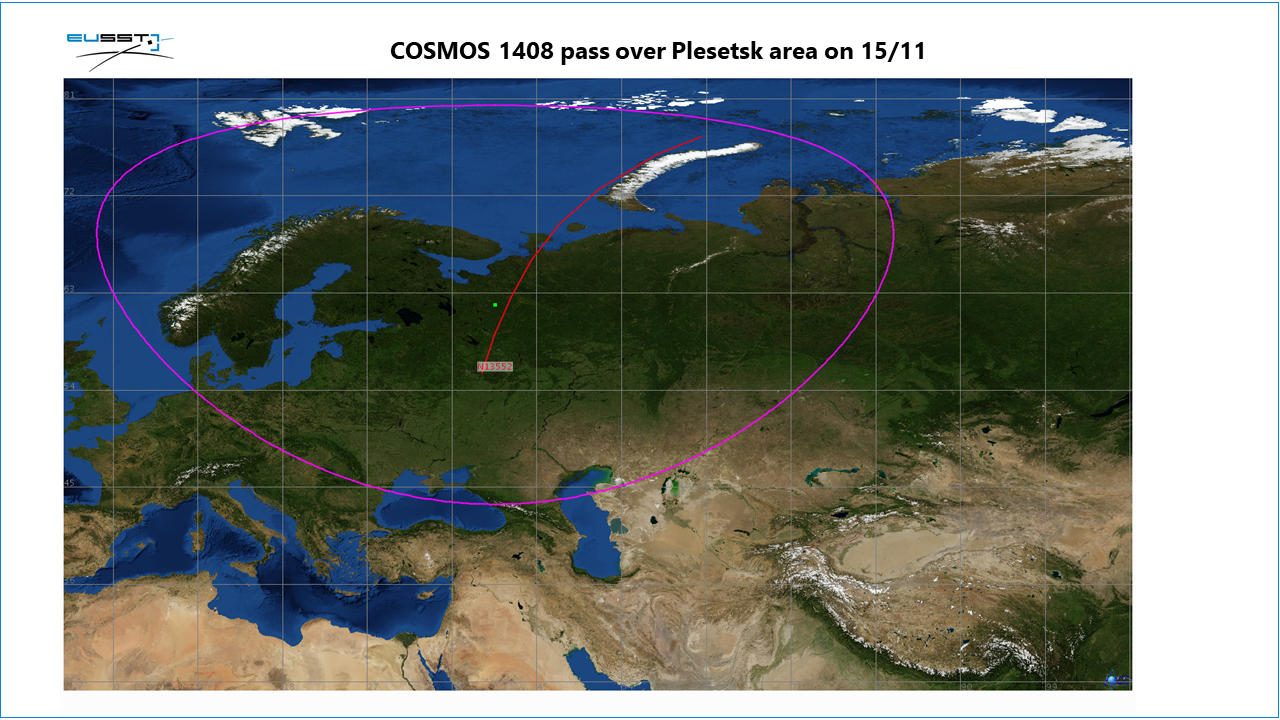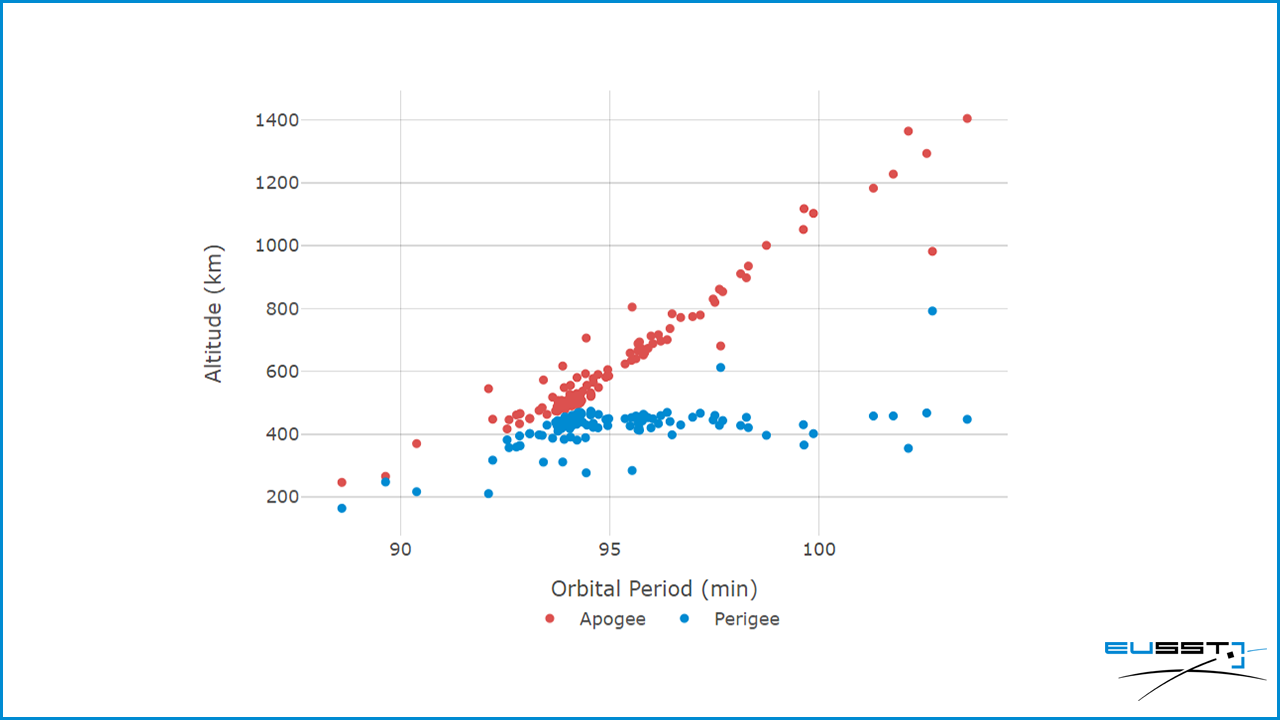
The EU Space Surveillance and Tracking (EU SST) confirms with data from its contributing sensors the fragmentation of space object COSMOS 1408. This event is related to the kinetic anti-satellite (ASAT) test which took place on 15 November 2021 likely at around 2:47 UTC and has been reported by the 18th SPCS and other sources. The EU SST network of sensors continues following up the evolution of the cloud of fragments generated and the impact of the event on European space infrastructure.
Latest update: 2021-11-25 17:00 UTC+1
The space object COSMOS 1408 was located in the already congested Low Earth Orbit (LEO) regime at an orbit of 465-490 km and around 82.5 degrees of inclination. The ASAT test took place when it flew over the area of Plesetsk on 15 November early morning. The simulations carried out by the EU SST Operations Centre (OC) in charge of the Fragmentation Analysis (FG) service – the Italian Space Situational Awareness Centre (C-SSA) – estimate a range between 1000 and 2000 detectable fragments generated.
The below Gabbard diagrams represent the fragments monitored by EU SST and how they have evolved. These graphs are useful to determine the orbital regimes that the fragments are reaching or which fragments are likely to re-enter the Earth’s atmosphere in a short timeframe.
Gabbard diagrams representing the monitored fragments as of 18 November (114) and as of 24 November (608) respectively. The number of fragments is expected to keep increasing for now.
Simulation of the ASAT test which took place on 15 November 2021
Simulation of the initial dispersion of the fragments resulting from the reported test
Kinetic anti-satellite (ASAT) tests are usually carried out against objects in orbit for strategic purposes or with the aim of demonstrating or testing technological capabilities. Those tests leading to the creation of space debris put our space infrastructure, including human lives on board the International Space Station (ISS), and the long-term sustainability of space activities at risk.
Potential impact and next steps
As stated by EU Commissioner Thierry Breton, this test has caused the generation of a significant amount of debris of a size that could endanger the EU’s space activities and those of its Member States. The event has increased the collision risk of spacecraft in the LEO regime registered to EU SST, hence impacting the safety of EU space infrastructure. The OCs in charge of the Collision Avoidance (CA) service are performing simulations to estimate potential conjunctions between the registered spacecraft and the fragments.
The resulting fragments from this event could remain in orbit for long periods of time, endanger other space assets, and ultimately render some orbits unusable. The EU SST Operations Centre (OC) in charge of the Fragmentation Analysis service, using data from the EU SST network of sensors, will continue updating the size distribution and potential orbits of the fragments with the latest information on the impact velocity and geometry.




